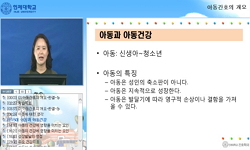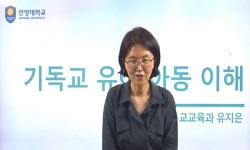The objective of the research is to find characteristics and scale of child poverty in GyeongGi-Do. The data for passing behavior of household in the National Capital region(2006) is analysed for the purpose. A child poverty rate is calculated by thre...
http://chineseinput.net/에서 pinyin(병음)방식으로 중국어를 변환할 수 있습니다.
변환된 중국어를 복사하여 사용하시면 됩니다.
- 中文 을 입력하시려면 zhongwen을 입력하시고 space를누르시면됩니다.
- 北京 을 입력하시려면 beijing을 입력하시고 space를 누르시면 됩니다.
https://www.riss.kr/link?id=A82461815
-
저자
김희연(Hee-Yeon Kim) ; 신현중 ; 김정숙 ; 좌승희

- 발행기관
- 학술지명
- 권호사항
-
발행연도
2007
-
작성언어
Korean
-
주제어
Child ; Poverty ; Child Poverty Characteristic ; Poor Household ; 빈곤 ; 아동 ; 빈곤아동특성 ; 빈곤가구
-
자료형태
학술저널
-
수록면
1-3(3쪽)
- 제공처
-
0
상세조회 -
0
다운로드
부가정보
다국어 초록 (Multilingual Abstract)
The objective of the research is to find characteristics and scale of child poverty in GyeongGi-Do. The data for passing behavior of household in the National Capital region(2006) is analysed for the purpose. A child poverty rate is calculated by three criteria: 50%, 60%, and 70% of a median block.
The analysis focuses on the impact of demographic and labor-marketed determinants on the child poverty. The study is composed of two parts: the first is to compare child poverty patterns among Seoul, Incheon, and GyeongGi-Do; the second be them among five districts in GyeongGi-Do.
The research results in the follows. Firstly, The poverty rate in GyeonGi-Do is the lowest in the National Capital regions. The northeast inland district has highest child poverty rate among five distircts in GyeonGi-Do. A neighboring area to Seoul and a south littoral districts are lowest child poverty rate.
Secondly, the research finds that the determinants of the child poverty in GyeongGi-Do are the number of child, whether a single parent is or not, whether the header of a household is female or not (especially 30-40 age groups). These factors also have the same effects in other regions such as Seoul and Incheon. GyeonGi-Do, especially, shows highest percentage of the type of single parent to household patterns in three regions. When considering the five districts in GyeongGi-Do, the northeast inland district records a highest percentage.
Thirdly, among labor-marketed factors, when a head of household takes the job of housewife or engaging in agriculture/fishery, a child of those households tends to be poorer than one of any other household.
Finally, concerning income family type, GyeonGi-Do shows the following results: the proportion of a dual income family is highest and that of an unemployed family is lowest. Among five districts in GyeonGi-Do the northeast inland district shows the highest proportion of the unemployed family.
Shortly, GyeonGi-Do has higher proportion of single parent and of engaging in agriculture/fishery of head of household than other two regions. The northeast inland district in GyeonGi-Do gets the higher child poverty rate than other four ones. Therefore a medium-and long term plan, which is proper to GyeonGi-Do, to overcome the child poverty should be established.
목차 (Table of Contents)
- 제1장 서론
- 제2장 아동빈곤에 대한 이론적 논의
- 제3장 경기도 빈곤아동 특성분석을 위한 방법론
- 제4장 수도권 빈곤아동가구 특성 분석
- 제5장 경기도 빈곤아동 특성 분석
- 제1장 서론
- 제2장 아동빈곤에 대한 이론적 논의
- 제3장 경기도 빈곤아동 특성분석을 위한 방법론
- 제4장 수도권 빈곤아동가구 특성 분석
- 제5장 경기도 빈곤아동 특성 분석
- 제6장 결론 및 정책건의
- 참고문헌
- 부록 : 2006 가구통행 실태조사 설문지
- ABSTRACT
- 연구요약
- 머리말
동일학술지(권/호) 다른 논문
-
- 경기연구원
- 강식(Sik Kang)
- 2007
-
- 경기연구원
- 봉인식(In-Shik Pong)
- 2007
-
- 경기연구원
- 김흥식(Heung-Sik Kim)
- 2007
-
- 경기연구원
- 이상규(Sang-Kyu Lee)
- 2007




 DBpia
DBpia






